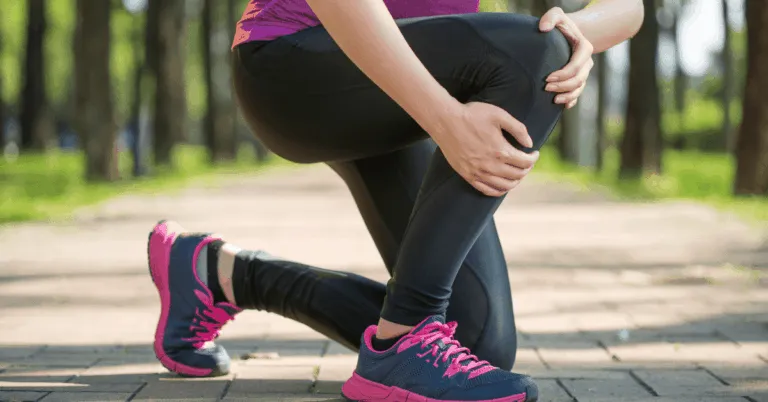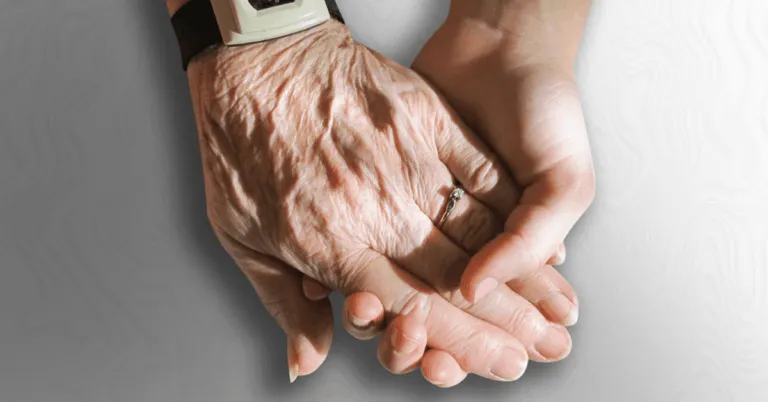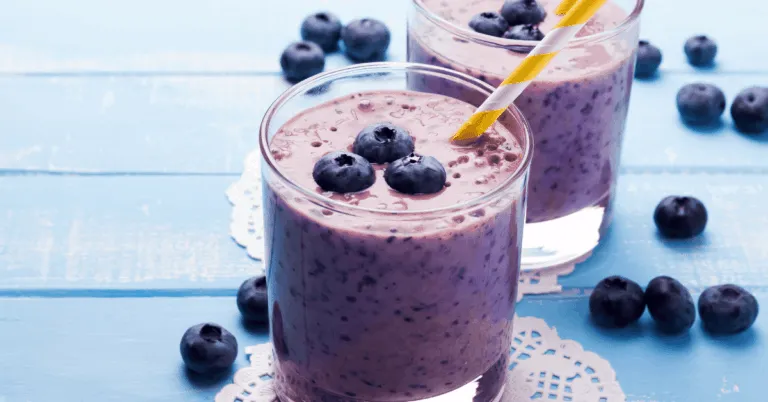The Secret To Getting Fit After 50
Health and fitness has no age limit. Despite what you may have heard, you can absolutely still get into the best shape of your life, even if you are over 50 years old. The rewards of a regular exercise routine become a lot more noticeable as you age.
Getting into shape builds confidence and muscle mass, boosting your mood and making you look more youthful than other people your age. You’ll see many other anti-aging benefits from regular exercise, like a better sense of balance and synchronization, improved mood, and better bone density.
Are you ready to get into shape after 50?
Great, let’s dive in!
We’ll look at several of the advantages of exercise in better detail, and after that, cover the most effective approaches to dramatically transform your body.

The Benefits of Exercise After 50
A handful of crucial advantages of exercising after 50 include:
Regular Exercise Keeps Your Heart Healthy
Changes that occur to your heart as you age can increase your risk of hypertension, heart disease, and stroke. Cardio workouts like biking and jogging are particularly good for keeping your heart strong and healthy.
Exercise Decreases Body Fat
All types of exercise can help you shed fat and preserve a healthy weight, which is vital for reducing your threat of old-age and lifestyle-related health problems like heart problems and type 2 diabetes, which has been shown to be linked to bodyfat percentage not overall weight (meaning just being heavy, i.e. tall and/ or muscular, does not increase risk of type 2 diabetes).
Exercise Builds Muscle and Strengthens Bone
All of us begin shedding muscle mass around the age of 30, and also bone mass around 40. You’ve probably noticed that you have a harder time keeping up with your favorite sports and everyday activities as you’ve aged.
This will continue if you do nothing to prevent that loss. Strength training can help you remain strong, energetic, and independent for the long-haul.
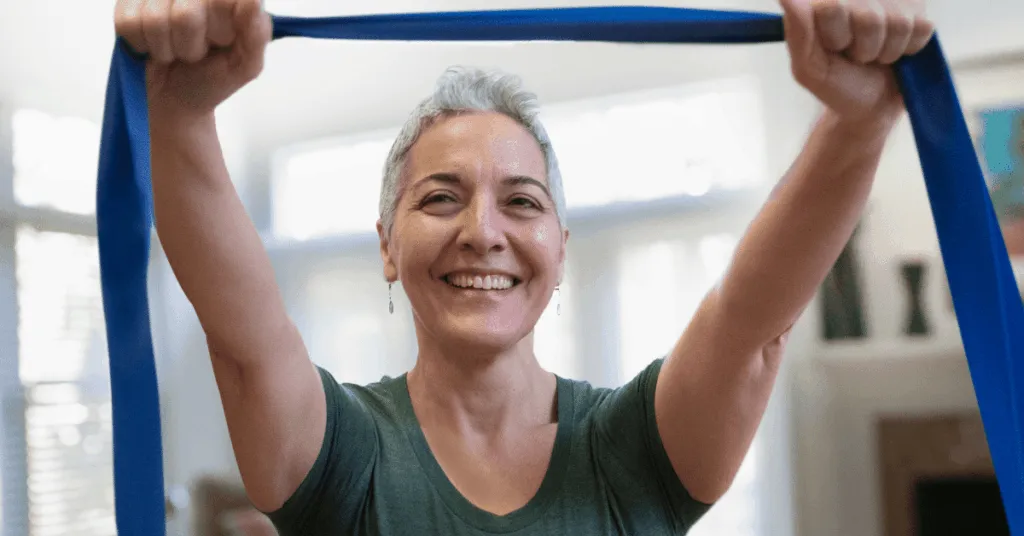
How to Get In Shape After 50
Getting fit after 50 does not have to be complicated.
Below are a few easy-to-follow tips that you can use to simplify the process so that before you know it getting in shape is part of your daily routine.
Set Goals and Track Your Progress
Your Very First Step: Identify an objective. Having clear objectives will remind you why you’re working out at all and motivate you to stick with it on days when you ‘d rather sit on the sofa.
You’ll be most effective if you make the objective both realistic and specific. So, instead of an unclear objective like, “Get in shape,” or a castle in the air like, “Lose 20 extra pounds in one week,” come up with something manageable and clear, such as Lose 20 pounds in 3 months.
Once you have a manageable and specific goal, break it down into smaller sized actions so you can easily track your progress. If your goal is to lose at least 20 pounds in 3 months, you need to work to lose about six and a half pounds of fat per month or one to two pounds per week.
Review your goal if your motivation dips. If your initial goal no longer motivates, you take some time to reconsider it and try to figure out what initially inspired you to get in shape. Maybe it was something more personal, like wanting to be around to spend time with your grandkids? A personal goal like that may be better than a simple “lose X amount of pounds in X amount of time” type goal.
Select Cardio & Strength Training Activities You Enjoy Doing
You can do plenty of trendy workouts to reach your objectives, but honestly, the best exercise is the one you’ll actually do. You’re most likely to get your exercises done if you enjoy them, so think about what activities you like: do you enjoy swimming? Biking? Dance?
If you dislike exercising solo, recruit your friends to join you. Find an online fitness area (such as a Facebook group) where you can swap exercises and suggestions, maybe take some classes with an online fitness instructor. No one says that you have to do this all by yourself.
Remaining energetic outdoors during your workout can help you get in shape, too, so brainstorm some reasons to hop on your feet during the day. Take your pet dog for a stroll, hit the park with your children or friends, and do stretches while you watch TV; if it’s a television program that has commercial breaks, consider doing the couch potato workout.
Make Tweaks To Your Diet
All that hard work and sweat will not pay off if you keep going back to old eating habits. Many women 50 and over really feel beat when workouts don’t bring results. However, several of these same women saying they aren’t getting results in their exercise routine are routinely eating tons of high-sugar and heavily processed unhealthy foods.
You might have been able to escape poor eating habits when you were younger, but now is the time to stop sabotaging yourself. Cut back on the sugar and watch the fat melt away.
Once you have begun menopause, inflammation becomes a bigger problem. As estrogen levels drop during menopause, swelling rises, raising your threat for Alzheimer’s, weight problems, and various other persistent health conditions.

Eating a Mediterranean Diet plan — a diet loaded with whole grains, vegetables, fruits, and foods rich in monounsaturated fats like healthy oils, nuts, and fish — is possibly your best option for dealing with inflammation, so consider adjusting your current meal plan to be more “Mediterranean” in nature.
If a Mediterranean diet doesn’t sound like its really for you or your are worried about some personal food sensitivities that you might have, consider trying the “Elimination Diet“, this is a diet where you start off eating a very small selection of healthy foods then slowly add new foods to your diet so that you can see how your body reacts.
As many women report that after 50 they start to notice that certain foods cause them minor-swelling (usually in the hands, feet, or face), an elimination diet can be a great way to narrow down which foods may be causing you to have these reactions so that you can eliminate it from your diet, learn more about the elimination diet here.
Beginning by making small modifications: Find healthier swaps for your preferred extravagances, select smarter bedtime snacks, cut back on alcohol, attempt to consume red meat only a few times per month (restricting your portions to 3 ounces), and add fruits and veggies into a lot of dishes. Avoid foods with chemicals, preservatives, and also food colorings whenever feasible.
Schedule Your Workouts
You would not avoid a doctor’s visit, would you? (Well, hopefully not.) Treat your workouts the same way by connecting them right into your schedule.
Attempt to arrange your exercises for times when you have the most energy. In other words, do not plan on working out first thing in the early morning if you’re not a morning person.
Start Slow
Inspiration is typically high at the beginning of any objective, but don’t let your excitement get the best of you. Many individuals attempt to take on too much when they begin a brand-new fitness routine, only to wind up extremely sore and burned out after just a few weeks.
Establish your own plan for lasting success by easing right into exercise, especially if working out is new to you. This may suggest beginning with just two or three exercises weekly and lightening the strength or size of those exercises until you’re prepared to add more.
Pay Attention To Your Body, And Don’t Forget To Rest
It’s completely normal to feel a little sore for a day or two after a workout, but anything longer or much more extreme than that is an issue. Take a few days off from intense exercise and do some light activity (e.g., strolling, swimming, yoga). After that, when you exercise again, lighten up a bit, so you don’t get too sore again.
You could be doing something your body’s not all set for or using incorrect exercise form. If the discomfort keeps coming back during exercise or turns into persistent, longer-lasting pain, get aid from a personal instructor and/or physical specialist.
Speak To Your Physician Before You Start a Brand-New Workout Routine
If you have not exercised in a while, consult a doctor prior to beginning an exercise routine. This is particularly important if you have any persistent conditions like heart problems or diabetic issues, and/or if you take prescription drugs.
Likewise, be sure to check with your doctor if you have any troubles during or after exercise, like heart palpitations, lightheadedness, and/or queasiness, or throwing up. Better be safe than sorry.
If you’re looking for a complete diet and exercise routine that’s easy to follow and allows you to rebuild your diet from the ground up, take a look at Good Fun Health’s 6-Week Fat Loss Bootcamp, it may be exactly what you’ve been looking for.
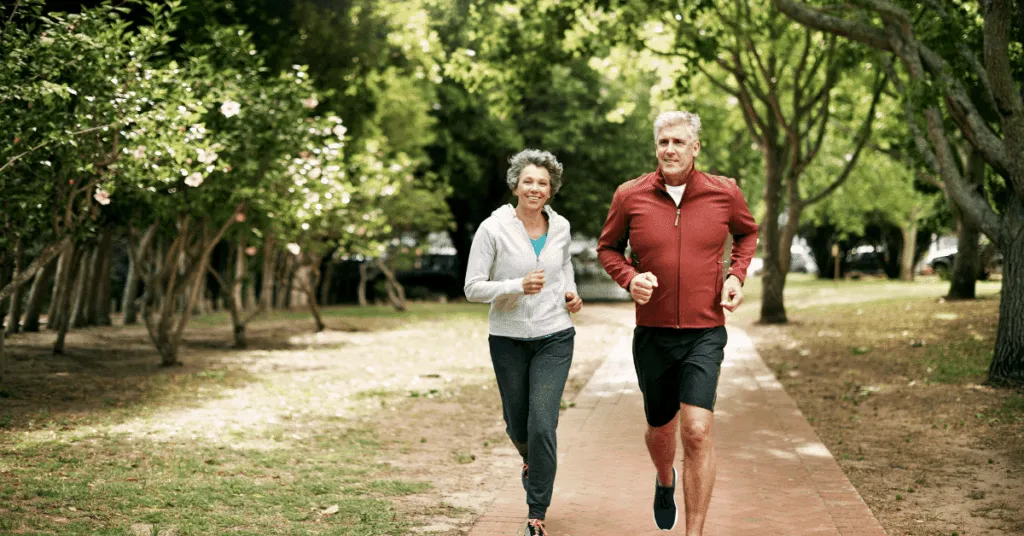
Final Thoughts
Getting in shape when you are older is a little more difficult that it was when we were all spring chickens, but it can be done. Follow the basic guidelines outlined here and before you know it you’ll be on your way to being healthy and happy (exercise releases endorphins, after all).
Have any other tips on staying fit as you age, let us know in the comments below.




